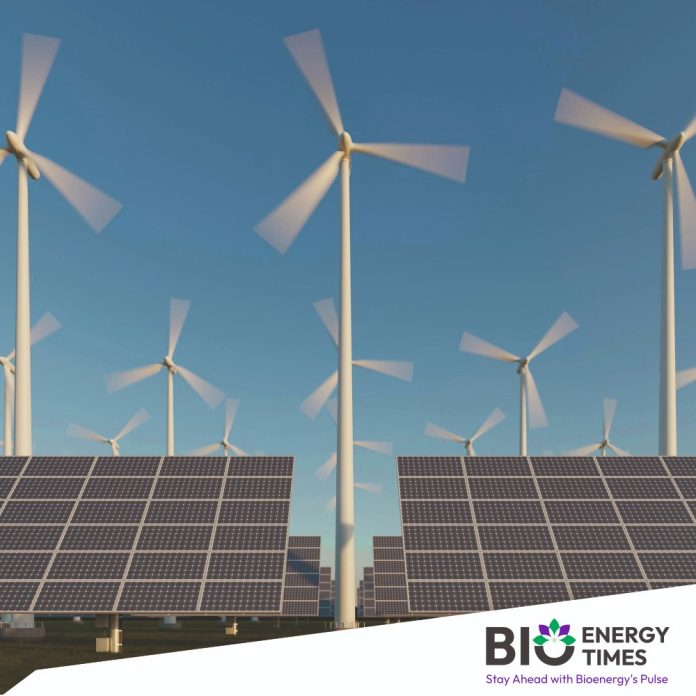India has made significant strides in renewable energy in recent years, and experts believe 2025 will be no exception as the country moves closer to meeting its ambitious green energy goals. The sector’s progress has been driven by strong collaboration between the public and private sectors, setting the stage for continued success.
India’s total electricity generation capacity has reached 452.69 GW, with renewable energy sources contributing a substantial share. This shift marks a pivotal change in the nation’s energy landscape, highlighting India’s growing commitment to cleaner, non-fossil fuel-based power generation.
India’s Green Energy Goals: A Commitment to a Sustainable Future
In line with its dedication to reducing dependency on fossil fuels, India made an ambitious pledge at the COP26 summit in 2021, announcing its Panchamrit targets. These include achieving 500 GW of non-fossil fuel-based electricity capacity, generating 50% of energy from renewable sources, and reducing emissions by 1 billion tonnes by 2030. India also aims to cut its emissions intensity of GDP by 45% by 2030 and reach net-zero emissions by 2070.
The focus on green energy as part of the broader climate change mitigation effort is gaining global momentum. With these targets in place, industry leaders are optimistic about India’s renewable energy future.
Strong Momentum as India Moves Towards 2025
Looking ahead to 2025, industry experts foresee significant growth in renewable energy investments, spurred by greater involvement from both the private and public sectors. Srivatsan Iyer, Global CEO of Hero Future Energies, anticipates that renewable energy investments will surge, setting the stage for ongoing expansion.
Akshay Jain, CEO and co-founder of Cancrie, echoed this sentiment, highlighting the expected rapid growth in green energy in 2025, particularly in the development of affordable energy storage solutions by startups and enterprises.
Government Initiatives and Challenges
Government policies have played a crucial role in driving India’s renewable energy progress. Initiatives like the National Green Hydrogen Mission, updated ALMM guidelines, and fiscal incentives for domestic manufacturing have encouraged innovation and investment in the sector. However, there are challenges that remain, particularly in transmission infrastructure and the need for faster execution of evacuation projects.
To address these gaps, industry leaders, such as Parag Sharma, Founder and CEO of O2 Power, have called for measures like waiving interstate transmission charges for Power Purchase Agreements (PPAs) signed before June 2025. Sharma also advocates for shortening the transmission scheme implementation cycle from four years to two.
Support for Domestic Manufacturing and Innovative Market Models
Prashant Mathur, CEO of Saatvik Solar, emphasized the rapid growth in solar cell manufacturing supported by government incentives, particularly with a focus on self-reliance.
Industry leaders also seek further government support. Anmol Jaggi, Chairman & Managing Director of Gensol Engineering, highlighted that reducing the Goods and Services Tax (GST) on solar trackers from 18% to 5%, or including them in Production Linked Incentive (PLI) schemes, could significantly boost domestic manufacturing.
Rohit Bajaj, Joint Managing Director at Indian Energy Exchange, is optimistic about the development of new market models like battery storage arbitrage, FDRE, and Virtual Power Purchase Agreements (VPPAs), which are expected to drive India’s energy transition.
Focus on Quality and Execution
As the renewable energy sector continues to evolve, quality will be a key focus for 2025. Simarpreet Singh, Executive Director & CEO of Hartek Group, stressed that the solar and EPC sectors should prioritize execution over overcommitting to projects. Overextension can lead to resource strain, delays, and compromised quality, he noted.
A Transformative Year Ahead
Looking to the future, experts predict transformative growth in India’s renewable energy ecosystem. Increased investments in solar and wind projects, integration of Battery Energy Storage Systems (BESS), and scaling up green hydrogen production under the National Green Hydrogen Mission are expected to be key growth drivers. With ongoing efforts to address challenges and capitalize on emerging opportunities, India’s renewable energy sector is well-positioned for a sustainable future.
For detailed information and further insights, please refer to BioEnergyTimes.com, which provides the latest news about the Biomass Industry














